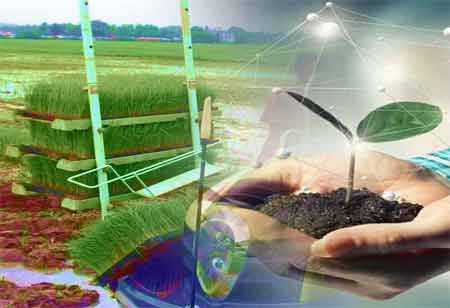Thank you for Subscribing to Agri Business Review Weekly Brief
Blue Foods and Sustainable Aquaculture: A Solution for Global Protein Needs
The increasing popularity of blue foods (fish, shellfish, algae, and seaweed) can be attributed to both global population growth and shifting dietary habits

By
Agri Business Review | Wednesday, January 24, 2024
Stay ahead of the industry with exclusive feature stories on the top companies, expert insights and the latest news delivered straight to your inbox. Subscribe today.
Investing in sustainable aquaculture and advocating responsible consumption of blue foods is not just a necessity but a pathway to a resilient and nourished future.
FREMONT, CA: The increasing popularity of blue foods (fish, shellfish, algae, and seaweed) can be attributed to both global population growth and shifting dietary habits. Provided the increased need for nutrient-rich food supplies, these resources are essential for the ethical farming of aquatic species and a resilient future.
Aquaculture's Rapid Rise and Global Impact
Driven by the increasing demand for protein globally, blue foods account for 7 per cent of the world's protein consumption. Aquaculture is expected to produce up to 140 million metric tons by 2050, highlighting its crucial role in meeting protein needs.
Sustainability Concerns in Aquaculture
Aquaculture, despite its growth, faces sustainability concerns due to factors like feed composition and production methods, especially in shrimp and salmon species. The industry's long-term viability is influenced by its environmental footprint, including carbon emissions, feed conversion rates, and land usage.
Transparency and Data-Driven Sustainability
Stakeholders across the aquaculture value chain are increasingly demanding transparency regarding the environmental impact of seafood production. Accurate and verifiable data is identified as the cornerstone of meaningful sustainability discussions. Transparency involves traceability, market transparency, clear labelling, robust monitoring, and data-driven approaches to predict impacts on marine ecosystems. Open access to fisheries data and research findings promotes independent analysis, better decision-making, and public accountability.
Why Blue Foods Matter
Blue foods are nutritional powerhouses, offering a treasure trove of essential nutrients. Rich in omega-3 fatty acids, vitamin D, iodine, and iron, these aquatic sources address dietary deficiencies, especially in regions facing malnutrition challenges. The potential to significantly enhance health, particularly among vulnerable populations like children and pregnant women, makes blue foods indispensable for future nutrition strategies.
Aquaculture provides significant environmental advantages, with reduced ecological footprints compared to terrestrial livestock. It reduces land and water demand, and certain aquaculture forms, like shellfish farming, contribute to water purification. It contributes to the preservation of marine ecosystems by reducing the strain on wild fish supplies and ensuring food security.
Novel Approaches
The sustainability of wild-caught fisheries is jeopardised by pollution, habitat damage, and overfishing. Dependence on fishmeal in feed and disease outbreaks is being addressed by innovative solutions.
Selective fishing gear minimises bycatch and protects vulnerable species, while closed-loop aquaculture systems reduce water pollution and resource use. The development of alternative feed sources, including plant-based ingredients and insects, is gradually replacing traditional fishmeal. Genetic improvement programs focus on breeding disease-resistant and fast-growing species, enhancing the resilience and productivity of aquaculture operations.
Collaboration among scientists, policymakers, and consumers is crucial in unlocking the full potential of blue foods. Embracing these aquatic resources and promoting sustainable practices simultaneously meet the nutritional needs of a flourishing population while safeguarding the delicate balance of oceans and freshwater resources.





